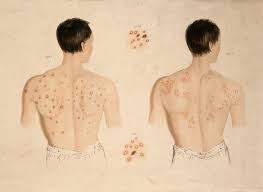The Philadelphia Record of a recent date contains an article under the above heading and giving two views of the building at Allentown, which is still standing, having been purchased by the city and used since as a public school house. There is nothing new in it to students of homoeopathic history, but as not every homoeopathic physician is up in history, an abstract may not be amiss to some of them:
Allentown and Homoeopathy are indissolubly linked together. In a certain sense, Allentown is the cradle of Homoeopathy, for it was here that the first homoeopathic college in the world was founded, and it is in Rittersville, just beyond the city limits, that the first homoeopathic insane asylum in the State is now in course of erection.
How little honor a prophet has in his own country is some what humorously demonstrated by the following true story: A homoeopathic physician, residing not over a thousand miles from Allentown, some years ago made a trip to Europe. In the course of his continental tour he met a famous professor of the same school of medicine. In the conversation which followed the introduction, the European professor learned that the American doctor hailed from near Allentown. “Ach,” exclaimed the professor, who, by the way, was a German, “that is the city where the first homoeopathic college in the world was founded. Have you seen the buildings? What do you know about them? What a shrine they must be!”
This was all news to the tourist, and he had to express himself to that effect, much to his regret and bewilderment. The German doctor gave him one look of deep disgust, and exclaiming “Dumkopf!” (Blockhead), turned on his heel and left. The first thing the other doctor did on his-return home was to pay a visit to these buildings and learn their history.
Homoeopathy was introduced into Lehigh County in the fall of the year 1830 by two Lehigh county men, Dr. John Romig, of Allentown, and Dr. John Helfrish, of Weisenburg Township. Both of them are now dead. Rev. Mr. Helfrish ministered to the spiritual wants of several congregations in this and adjoining counties. Both gentlemen had been induced to take up the new system of medicine by Dr. William Wesselhoeft, of Bath, Northampton County, who before his conversion had been an allopathic physician of great ability.
Dr. Wesselhoeft was among the first homoeopathic physicians in this county. It was in the fall of the year 1830 that he began to make weekly visits to the home of Rev. Mr. helfrish, in Weisenburg, for the purpose of instruction the latter in Homoeopathy. Here a number of patients were regularly present, so that the new healing system could at once be put to a practical test. Those meetings were kept up until August 23, 1834.
On that day was organized a society known as “The homoeopathic Society of Northampton and adjacent Counties,” which, of course, included Lehigh.
The members from Lehigh, beside Dr. Romig and Rev. Mr. Helfrish, were two German physicians, Dr. Joseph Pulte and Dr. Adolph Bauer.
The homoeopathic society held regular meetings at Bethlehem, Allentown, and at the residences of its members. The result of these meetings was the establishment of a homoeopathic school at Allentown, called “The North American Academy of the Homoeopathic healing Art.” This was the first homoeopathic medical college in the world. It was founded on April 10, 1835, the eightieth anniversary of the birth of Dr. Hahnemann, the founder of the system.
Some time previous to this Dr. Constantine Hering had begun the practice of Homoeopathy in Philadelpia. He was requested to come to Allentown and be president of the new college. He accepted the call and became the leading spirit of the institution. The faculty was as follows: Drs. Hering, William Wesselhoeft, E. Freytag. John Romig J.H.Pulte and Hery Detwiler. The last named resided at Hellerstown, and was the man who, on July 24, 1828, had prescribed the first dose of homoeopathic medicine ever given n this State. The remedy was given to a lady in Bethlehem.
The course of instruction was of a high standard, and given entirely in German. Its annual sessions lasted from November 1 to August 31.
When the college went out of existence the city purchased the buildings and changed them into schools, and they have continued thus ever since.
The Dr. Pulte of this early college afterwards removed to Cincinnati, O., and the Pulte College of that city is named after him.




